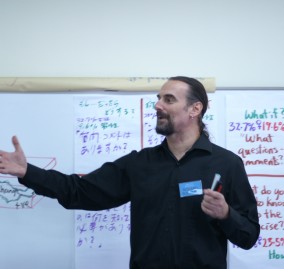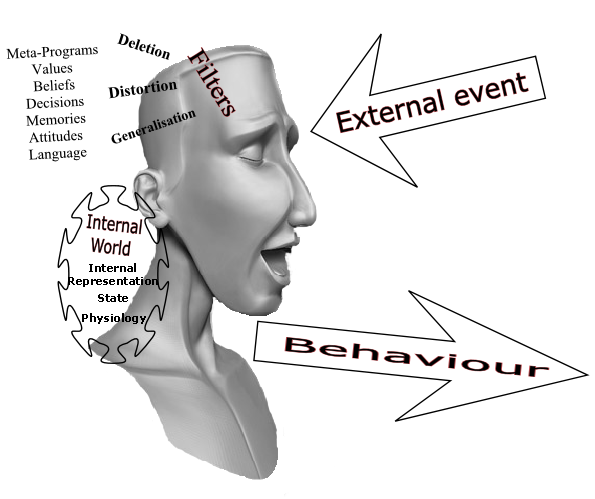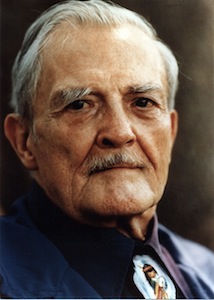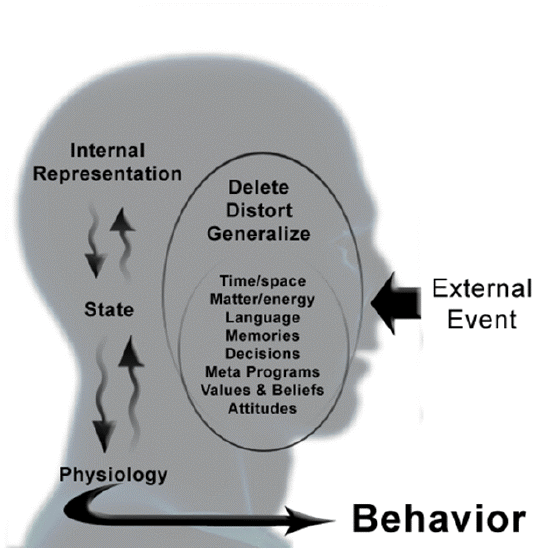
This is part of a series of interviews with experts. The people interviewed are experts in fields such as Positive Psychology, NLP, Neuro Science and other disciplines that I draw from in my coaching and training work.
This interview is with Dr. Richard Bolstad. I have asked Richard the questions I most commonly get asked about what NLP is. But first a bit about Richard.
Dr Richard Bolstad trains NLP Practitioners and trainers in America, Europe, Asia and Australasia. He has written 10 books on NLP, and his books are translated into eight languages. Steve Andreas, co-developer of NLP and author of “NLP: The New Technology of Achievement” says “Richard Bolstad is one of the finest NLP trainers I know. Besides being personable, engaging, and high energy, he is very skilled, with a rare breadth and depth of knowledge.” Joseph O’Connor, author of “Successful Selling With NLP”, and “Practical NLP For Managers”, says “Richard’s work will leave you with a deeper knowledge of NLP, whether you are already familiar with the field or not.” Information about his latest trainings in 2014 is available from his site www.transformations.net.nz
The site also provides free e-books and MP3s of training so you can start studying right now.
Interview with Richard Bolstad by Gai Foskett
What is NLP?
Richard Bandler was a fourth year student in Dr John Grinder’s linguistics class at the University of California in Santa Cruz, when the two of them began the development of Neuro Linguistic Programming (NLP) in 1972. The richness of NLP owes much to the network of people that this association focused, including Virginia Satir (the developer of family therapy), Gregory Bateson (systems theorist and ecologist), Dr Milton Erickson (medical doctor and innovative hypnotherapist), George Miller (neuroscientist), and Noam Chomsky (developer of linguistics).
Bandler and Grinder saw NLP as a meta-discipline (above and beyond other disciplines such as education, coaching or business), based on “modelling” (creating models to explain how experts in any discipline achieve their results).
By studying experts in a field such as psychotherapy (where the first such experts studied were Dr Milton Erickson and Virginia Satir) the NLP developers claimed that it is possible to identify cognitive patterns which can then be taught to others in that field, or even in other fields, to enhance performance. This modelling process then generates not only a list of cognitive patterns which are useful in various circumstances, but also a list of “training” or “installing” techniques for transferring the cognitive skills to another person. These lists of patterns and techniques are usually thought of as the content of “NLP”, but they are actually merely a sampling of the results of the core NLP process – modelling.
For example, Donald Moine at the University of Oregon studied 45 minute long audiocassette recordings of insurance salespeople. His sample included top producers from their companies, as well as “average” producers of sales. The highly successful salespeople used far more of a precise set of “language patterns”, already documented by NLP in the work of Virginia Satir and Dr Milton Erickson. This powerfully influential language was part of the most successful salespeople’s skill in enabling others to change. Having identified which patterns successful salespeople use (largely unconsciously, for the original users) Moines was then able to teach those patterns to other salespeople wanting to communicate more successfully in the sales situation.
How and why does NLP work?
Given that the first “models” studied by the developers of NLP included psychotherapists, it is understandable that many of the first patterns of excellence identified using NLP have immediate application in the related field of coaching. NLP, to restate, is not just “a kind of coaching”. Today, NLP also forms the basis of most of what is called accelerated learning.
It’s being used in sports motivation and performance, in medicine, in psychotherapy, and in business. To identify the patterns by which successful people achieve their results, NLP suggests that we pay attention to the details of how people use their brains. Everything we experience of the world comes to us through the neurological (brain) channels of our sensory systems.
The greatest spiritual transcendence and the most tender interpersonal moments are “experienced” (transformed into internal experiences) as images (visual), sounds (auditory), body sensations (kinesthetic), tastes (gustatory), smells (olfactory) and learned symbols such as these words (digital), all inside our brains. Those experiences, furthermore, can be re-membered (put together again) by use of the same sensory information.
Let’s take a simple example.
Think of a fresh lemon. Imagine one in front of you now, and feel what it feels like as you pick it up. Take a knife and cut a slice off the lemon, and hear the slight sound as the juice squirts out. Smell the lemon as you lift the slice to your mouth and take a bite of the slice. Taste the sharp taste of the fruit….If you actually imagined doing that, your mouth is now salivating. Why? Because your brain followed your instructions and thought about, saw, heard, felt, smelled and tasted the lemon. By recalling sensory information, you recreated the entire experience of the lemon, so that your body responded to the lemon you created.
Your brain treated the imaginary lemon as if it was real, and prepared saliva to digest it. Seeing, hearing, feeling, smelling and tasting are the natural “languages” of your brain. Each of them has a specialised area of the brain which processes that sense. Another NLP term for these senses is “Modalities”. When you use these modalities, you access the same neurological (brain) circuits that you use to experience a real lemon. As a result, your brain treats what you’re thinking about as “real”.
Understanding this process immediately illuminates a number of our coaching clients’ challenges. The person with Post Traumatic Stress Disorder (PTSD) panics when they are reminded of disturbing past events – they use the same “think-of-a-fresh-lemon” process to recreate vivid and terrifying flashbacks to these traumatic events. And knowing how these brain circuits allow them to do that also shows us a number of ways to solve the problem. The largest research study on a NLP technique is currently being undertaken by the Marshall University using a $15,000,000 Department of Defense Center for Excellence for PTSD Grant. 3000 veterans are being treated at both University and Army base sites using the standard NLP Phobia-Trauma process.
How is it different to “The Secret” and other New Age Visualization?
The Secret and its popularisers such as Jack Canfield have given the impression that success is almost magical and results from just imagining it happening (The so-called “law of attraction”). Jack Canfield’s focus and trust in the universe may have attracted to him people who could support his goal of earning $100,000. It may have given him what seems to him now an apparently magical idea of selling more of the books that were already his life work (“Chicken Soup for the Soul”). His focus also gave him a lot more that worked alongside these synchronicities and intuitions. He had written the book – a job that “seemed like a totally overwhelming and never-ending task” already. He was both trained as a teacher and an accomplished writer and he was willing to put in the extra time promoting his book at presentations and writing about his book… and writing the follow-ups. When he urges us, on the DVD “The Secret” to let the universe solve the “How”, his statement needs to be read in this light.
NLP has studied the “how” of success in a number of fields. High achievers frequently do not know themselves “how” they get results, but that does not mean there is no “how”. Virginia Satir, the first expert studied by the developers of NLP, said in her foreword to the first ever NLP book, “The Structure of Magic”: “Looking back, I see that, although I was aware that change was happening, I was unaware of the specific elements that went into the transaction which made change possible…. I do something, I feel it, I see it, my gut responds to it — that is a subjective experience. When I do it with someone else their eyes, ears, body sense these things. What Richard Bandler and John Grinder have done is to watch the process of change over a time and to distill from it the patterns of the how process.”
The history of NLP is the history of discovering the “how” that makes success happen behind the apparent magic of intuition and synchronicity. NLP developer Robert Dilts emphasises that in successful creativity, the “dreamer” state is followed by a “realist” state and then a “critic” state. This is not to deny the wonders of intuition and synchronicity, but to add to them such miracles as motivation, commitment, love, and the willingness to act in the material world. For every step you take towards your outcome, the universe may well take ten towards you. Ten times zero is still zero though.
Another important distinction that NLP makes in relation to the get-rich-quick ideas of The Secret is to check that what we are achieving is actually worth achieving. This is done in NLP terms based on clarifying and modifying “values”, which NLP describes as the engines of both motivation (what do I really want enough to work towards it?) and satisfaction (how do I feel now that I have what I wanted?).
Values work raises important issues for those of us supporting entrepreneurs and others to be successful. Dr Tim Kasser and Dr Richard Ryan have completed a number of studies in 13 different countries, comparing people who are highly motivated by making money to those who are not. They say “The more we seek satisfactions in material goods, the less we find them there.” Even when such money-motivated people believe that they are likely to succeed in making money, the obsession is correlated with low self-esteem, depressed mood, and increased use of drugs. When they succeed, “The satisfaction has a short half-life; it’s very fleeting.”
Motivation to feel more connected with people, on the other hand, correlates with increased sense of well-being. A study by business school lecturers Dr Aric Rindfleisch, Frank Denton and Dr James Burroughs confirmed that “people who are more materialistic tend to be unhappy with their lives”. Interestingly, their research suggests that the depression accompanying an obsession with money is reduced if the person has close, caring relationships.
NLP trainer Dr L. Michael Hall puts this more clearly than any other motivational expert when he says “Making money only for the sake of having more money does not really enrich our internal experience of life, or give us more quality in our thinking or feeling.” Reviewing a study of successful millionaires by Dr Scrully Blotnick, he urges “Would you like to become rich? Good. Set that as your goal, then forget it…. It’s not about money. Blotnick noted that almost all of those individuals who eventually became millionaires hardly noticed.”
Isn’t NLP a bit woo-woo?
There are three main reasons that NLP has received this unfortunate reputation. The first is due to its presentation in Wikipedia and a few other hostile academic forums. The article in Wikipedia gives the general impression that NLP has been discredited and is ineffective. For a complete review of that misleading research, see the article, 35 Years Revisited: Conceptual Errors in Scientific Inquiry, a Case Study, at: www.nlpwiki.org/35-years-revisited-3
Paradoxically, another reason for the NLPs bad reputation springs from its perceived effectiveness in misuse by disreputable salespersons, trainers and others that have used it in an unethical and manipulative manner. NLP is a powerful technology and that power has at times been co-opted and misrepresented. In many cases it has been presented as a means for seducing purchasers and sexual partners and as a get-rich-quick scheme. Frankly, the third problem NLP has faced has been the character of its founders. Not long after its arrival on the international stage the field was beset by acrimonious law suits by founders claiming ownership over the name and brand, by admitted drug use by one of the founders, and other similar problems that detracted from its reputation. Sad though these occurrences may be, they do not detract from the efficacy of the model or the positive results of research which are now accumulating.
NLP is eminently practical and simple, as top New Zealand triathlete Steve Gurney explains: “I’d like to share with you a small but extremely powerful story of how I used mental attitude through Neuro-Linguistic-Programming (NLP), to boost my performance in this year’s Coast to Coast. It’s a story about turning a negative into to a positive, Converting “worry” into a “challenge”! Instead of being scared of the competition I wanted to “relish in the challenge” I was worried about the mountain run. Despite being a handy runner and getting plenty of run training under my belt I’m not as fast over Goat Pass as Gelately. Historically, I would emerge from the mountain run with a deficit of 8 to 10 minutes on the leader. It then requires a mammoth effort for me to close this gap before the finish line… very stressful! (Of course I could run through the mountains faster than the leaders, but it is a matter of efficiency. I need to carefully pace myself to race at a speed that I can maintain for the entire 11 hours, not just a 3-hour mountain run. I could win the mountain run, but blow up before the race finish line). I enlisted the help of my NLP coach, Richard Bolstad for some help with this one.
To summarise, the solution lay in blowing apart my belief that I always trail the lead runners by 10 minutes. Bolstad powerfully pointed out to me that reality is whatever I imagined it to be, and in fact, with a little work I could alter my beliefs to be more powerful and positive. I visualised the lead runner to be “just around the corner” ahead of me, possibly even behind me, and not the dreaded 10 minutes that I was imagining. It worked a treat! I emerged from the run 1 minute ahead of Gelately!! My best mountain run to date!! The mechanism is one of positivity, fun and enjoyment. This releases endorphins and other natural “go-fast” chemicals that enhance focus, concentration and more efficient use of muscles and blood glycogen.”
What is the science behind NLP?
To date, the most comprehensive book on research into NLP is: Wake, L., Gray, R. & Bourke, F., Bolstad, R. et alia (2012). The Clinical Effectiveness of NLP: A Critical Analysis. London, Routledge. In “The Clinical Effectiveness of Neurolinguistic Programming” international academics, researchers and therapists are brought together to examine the current evidence of the clinical efficacy of NLP techniques, considering how NLP can be effective in facilitating change, enrichment and symptom relief. In this book, I and the other contributors explore how NLP has been used to treat various disorders including, post-traumatic stress disorder, phobias, addictions, anxiety disorders and depression.
To get useful information on line, rather than merely reading hostile psychologists’ opinions on Wikipedia, check the collated research at http://nlpwiki.org/wiki .. As mentioned above, the research on NLP techniques for treating post-traumatic anxiety is particularly dramatic. In his book “The Trauma Trap”, Dr David Muss MD documents his extensive use of this NLP Trauma Process with victims of PTSD: A policeman involved in the Hillsborough soccer disaster describes how his flashbacks (sudden horrific memories of the trauma), insomnia and alcohol abuse disappeared after two sessions. A patient (Barbara Drake) tells how one session with Dr Muss completely resolved flashbacks and other symptoms resulting from a sexual abuse experience. These and the other stories documented by Muss parallel our own experiences as trainers and Master Practitioners of NLP. Muss says “I know that it has worked for every patient I have dealt with so far, without exception.” (Muss, “The Trauma Trap”, 1991, p 10). Muss did a pilot study with 70 members of the West Midlands Police Force, who had witnessed major disasters such as the Lockerbie air crash. Of these, 19 qualified as having PTSD. The time between trauma and treatment varied from six weeks to ten years. All participants reported that after an average of three sessions they were completely free of intrusive memories and other PTSD symptoms. Follow-up ranged from 3 months to 2 years, and all gains were sustained over that time.
In the general field of psychology, most of the original postulations of NLP are now backed up by research into what is known as “embodied consciousness”. To give a simple example of this research on embodied consciousness, consider the following study. In a study by Emily Balcetis, an assistant professor in NYU’s Department of Psychology, and David Dunning, a Cornell professor of psychology, volunteers tossed a beanbag towards a gift card (worth either $25 or $0) on the floor. They were told that if the beanbag landed on the card, they would be given the card. Interestingly, the volunteers threw the beanbag much farther if the gift card was worth $0 than if it was worth $25 — that is, they underthrew the beanbag when attempting to win a $25 gift card, because they viewed that gift card as being closer to them. These findings indicate that when we want something, we actually view it as being physically close to us. Moving an object, in our imagination, closer to us makes us see it as more significant and thus creates motivation in the brain. This is then the basis for several NLP processes such as the “visual swish”, in which an image of a desired future self is moved quickly closer and becomes brighter.
Want to read more? Download the free e-book “The Rapport Based Organisation” from Richard’s site http://www.transformations.net.nz/




